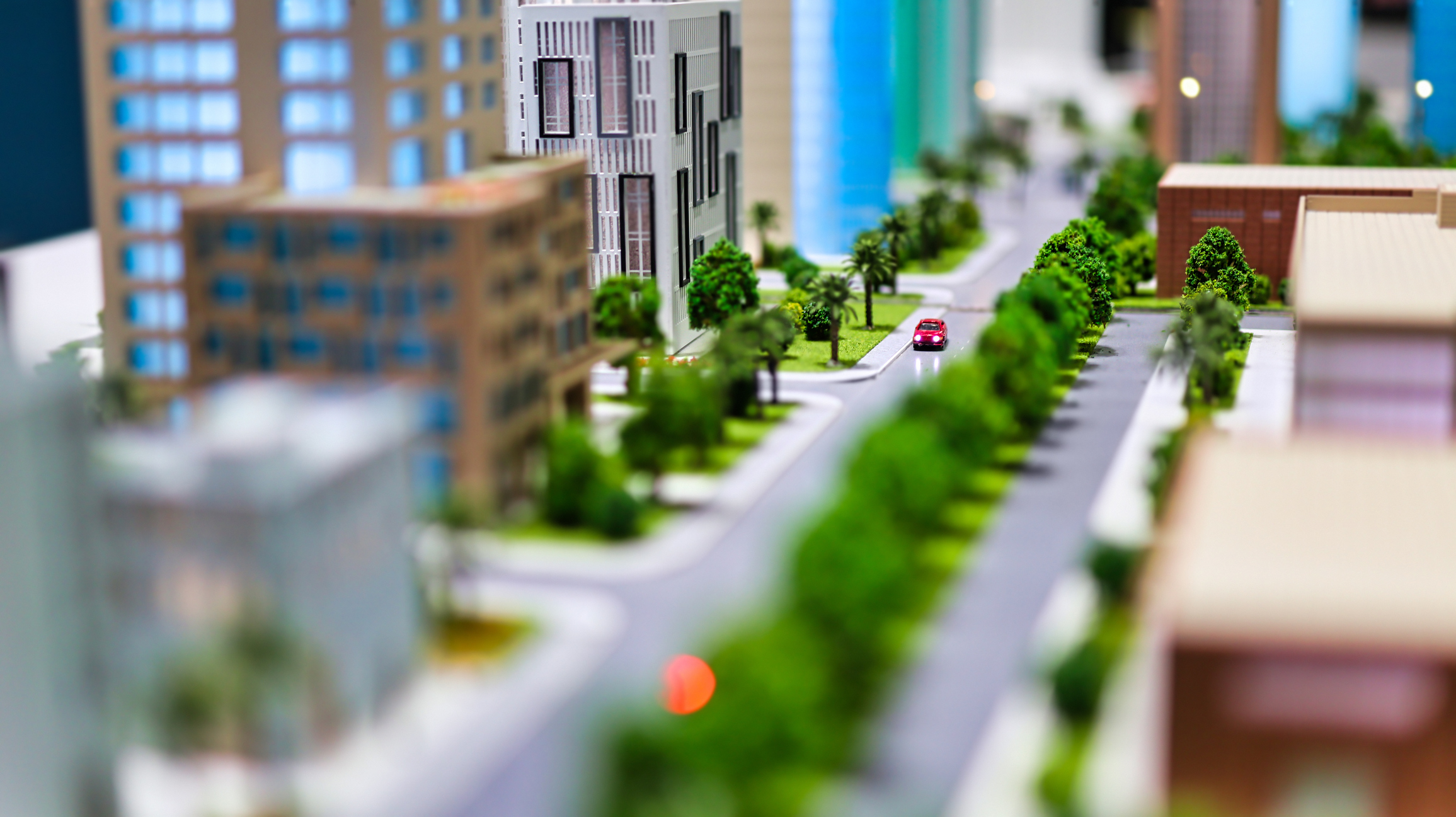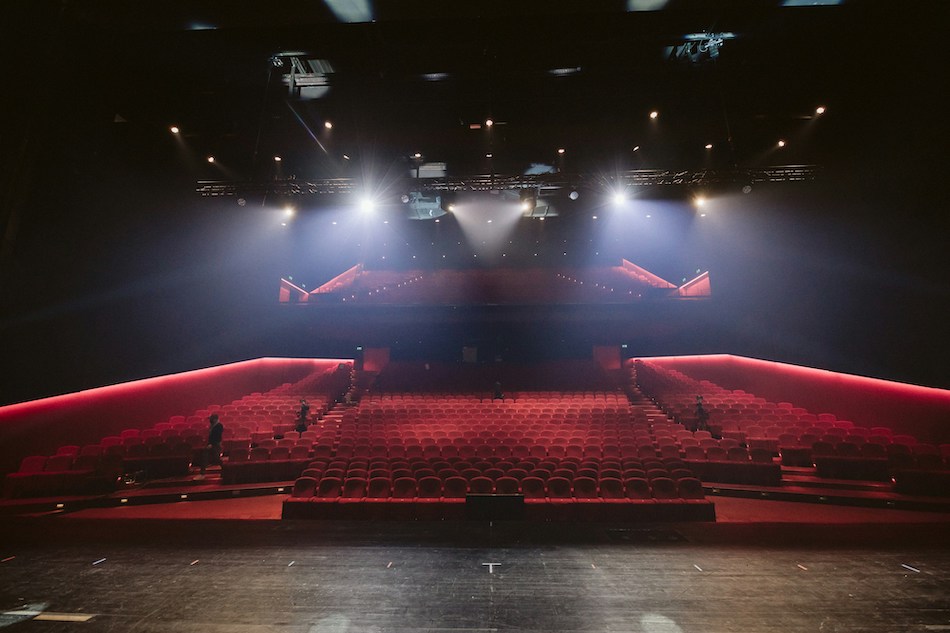Featured in

- Published 20210803
- ISBN: 978-1-922212-62-7
- Extent: 264pp
- Paperback (234 x 153mm), eBook

IMAGINE A PARK made out of candy, with bridges featuring water cannons that shoot water onto kayakers below. Imagine huge climbing walls from which you can jump onto giant trampolines, or a place that allows you to skydive into your neighbourhood park. Imagine a treetop library with beanbags all around the grass below so that you can sit and read outside.
Are these children’s dreams, a cartoon-like fantasy – or aspects of a utopia that could serve our entire society better? Could children’s imaginations point us towards a vision that could serve everyone well, assisting the design of more thoughtful and natural spaces that we can all enjoy more? According to Mara Mintzer, an advocate for child-friendly cities, it’s the latter. A city that accommodates for children – and I’m using the United Nations Convention on the Rights of the Child definition of ‘children’ here as anyone under eighteen – is one that becomes more inclusive for all citizens, especially the elderly and those with disabilities.
In Boulder, Colorado, one initiative has invited the city’s youngest to help urban planners create a child-friendly city. The Growing Up Boulder project, working out of the University of Colorado Boulder in partnership with the municipality, sought children’s input on planning, transportation, parks and – most recently – policing.
‘Wouldn’t children’s ideas be childish and unattainable? Do our cities really need a park made out of candy?’ asks Mintzer, the director and co-founder of Growing Up Boulder, echoing common responses to these kinds of architectural and landscaping ideas. Well, from a cognitive-developmental perspective, kids think of different possibilities – and they like thrill-seeking activities – partly because their prefrontal cortex (the rational side of the brain) is still developing. Adults, on the other hand, tend to focus on constraints. By not listening to children, Mintzer points out, not only do we design from a perspective that ignores a large segment of the population, we also limit the potential for creativity.
In 2012, Growing Up Boulder involved children in the redesign of the city’s downtown Civic Area. The program engaged with schools, after-school programs for under-represented youth and a local preschool, drawing on a total of 225 kids aged from four to sixteen. Growing Up Boulder used a variety of methods to get feedback from the children on what they liked and didn’t like about the area. On one field trip, children were asked to use a red frame to take pictures of what they did not want more of and a green frame to capture what they did want more of. Unsurprisingly, the children didn’t like litter or speeding bicycles; they did like being close to the water and seeing people kayaking down the creek. Even toddlers were part of this design project. They wanted more colourful spaces and more birds, and they used verbs that clearly indicated what they wanted more of in terms of activities and opportunities: play, dig, climb, get wet.
These children were invited back to attend the site’s opening in 2018. Many of their ideas had made it into the final design, including better access to a creek, a see-through bridge that shows the water below, and clearly separated paths for bikes and pedestrians. At the opening, many children were enthusiastic – not only about having been heard, but also about using a site they contributed to creating.
Throughout the process, Mintzer realised that making a city more child-friendly – emphasising walkability, less traffic, less pollution and more access to nature – also made it more enjoyable for all its other inhabitants. Smooth paths, for example, make a city less hazardous for children, but a walkable city is also one in which elderly people or those in wheelchairs can move about more easily. Growing Up Boulder confirmed this in a subsequent project to improve the transit corridor between the downtown and University Hill neighbourhoods. This ‘street corridor’ project paired primary-school children with local seniors. ‘The kids and the seniors had the same ideas,’ Mintzer says. ‘They wanted more trash receptacles and a bench halfway up the hill. They co-created a design with a bench with flowers and artwork that turned it into a space for connection and not only for rest.’
As Darcy Kitching, an urban planner and educator who serves on the Growing Up Boulder Steering Committee, has observed, children also have a particular eye for detail. In one blog post, she describes her own training in observing her environment – she co-ordinates walking experiences with the Walk2Connect Co-op and studies youth and family transportation as a doctoral candidate at the University of Colorado Denver. Even so, she was surprised when a group of first graders (six and seven years old) discovered a small plastic brontosaurus in a clearing beneath the tree. ‘I realised that, as sensitive as I thought I had been to children’s perspectives and interests in their environments, I never would have lifted up those branches myself. The children happily and without question explored every part of the neighbourhood accessible to them,’ she writes.
YOU MAY THINK of ‘play’ as a fun activity that kids engage in. If you’re a parent, play is your ally, a way in which your child does something else while you wash the dishes, prepare dinner or catch up on emails. But play is an essential activity that all humans need to develop and grow. Studies of young animals have shown that play is essentially how the youngest try out their skills before they need to secure their food or win a fight – without the help of parents or elders.
One example of this stands out among many in the animal world. New Caledonian crows can adapt and create tools in order to better reach grubs to eat. Looking at different experiments that have tested their skills, it’s hard not to be surprised by their problem-solving capacity and their precision. One theory is that New Caledonian crows have such impressive tool-making abilities because the parent crows let their fledglings play around with sticks and palm leaves before they need those skills to independently feed themselves.
Humans have an exceptionally long childhood compared with other animals – even primates, who go directly from infancy (where they depend on their carers for feeding) to juvenile growth (where they become independent but aren’t sexually mature). Human children go through a long period between being weaned, around the age of three, and actually looking after themselves and becoming independent from adults, around the age of seven, as noted by biological anthropologist Barry Bogin. The reason for this has partly to do with the fact that we are born with brains that are still developing – if our brains grew larger before birth, we would not be able to get through the birth canal. In his 2007 book Why Youth is Not Wasted on the Young: Immaturity in Human Development, David F Bjorklund, who researches evolutionary developmental psychology at Florida Atlantic University, explores how this extended immaturity – a result of our evolution – can actually be incredibly useful for humans. From a developmental perspective, he argues, this is the period in which we explore, learn, develop and become highly adaptive and flexible. And this is exactly why children play: so that they can experiment and learn without having to apply any skills immediately to real life.
But this definition of play as useful for development creates a paradox. On the one hand, play’s most important role is as a means of learning. On the other hand, one of the elements that characterises play, that makes it more ‘useful’ or ‘successful’, is that it is aimless; children engage in it for its own sake.
This paradox has become evident all around us, and it has had negative effects on our societies. Data shows that children are playing less and less, with adults stepping in and encouraging playtime only when it serves a function. This is especially evident in contexts where educational demands are higher and academic performance is seen as a priority, such as in Australia, the United States or Hong Kong. Prioritising exams and results, timetables and schedules – in school and at home – restricts play substantially. Research led by Elizabeth Bonawitz, a cognitive development psychologist at Harvard, found that when kids are expected to follow instructions during play, they don’t learn in the same way as with unstructured play. This curriculum-first trend often happens even in preschool, as toddlers’ playtime is reduced to pack in more curriculum. The most compelling indicator of this change is that the time allocated for recesses or breaks has dropped significantly – by around a third in the US and by around 20 per cent in the UK.
Parenting can also become an enemy of play when it comes to the high expectations parents may have of their children, heavy financial investments in their future, or worries about the violence or potential risk of traffic or other elements in their neighbourhoods. The prevalence of screens or devices can also take children away from much needed unstructured time to explore.
While these different obstacles get in the way of free play, another big issue is affecting broader play experiences: more than half the world’s children now live in urban settings – most of which are not play-friendly at all. By 2050, it’s forecast that 68 per cent of children will live in cities. And outdoor spaces for play are becoming increasingly rare – especially in the Global South, where urbanisation is happening more quickly and with less infrastructure, higher percentages of the population live in poverty, and people are often piling up in informal housing or slums.
How can children play – and play well – in these situations, when many schoolyards have cement floors, most playgrounds are enclosed and play is delineated by prescribed times and activities? This question becomes even more urgent in terms of honouring the idea that play is a fundamental right of children that’s afforded the same status as other rights, including healthcare, nutrition and education, as ratified by the United Nations Convention on the Rights of the Child.
GROWING UP BOULDER is just one demonstration of the fact that children have a very different perspective of what play looks like when they are involved in the process. The child-friendly cities movement took off in the 1990s, with action culminating in the UNICEF-sponsored Child-Friendly Cities Initiative – but child-friendly perspectives in urban planning have increased over the past decade, with several actors championing the cause. Tim Gill, a global advocate for children’s outdoor play and mobility for decades, illustrates this in his most recent book, Urban Playground: How Child-Friendly Planning and Design Can Save Cities. The Netherlands-based Bernard van Leer Foundation – a non-government organisation that focuses on early childhood development – launched its Urban95 initiative in 2016, focusing on children’s perspectives in urban planning. In 2017, the global engineering and urban design firm Arup published a report on child-friendly urban planning and design. In 2018, UNICEF devoted a handbook to child-responsive urban planning, focusing on low- and middle-income contexts. Now, cities worldwide – including Vancouver, Barcelona and Tel Aviv – have adopted at least some child-friendly elements, with some, such as Rotterdam, changing profoundly as a result of the perspective shift.
In Taiwan, a group of mothers set up Parks and Playgrounds for Children by Children (PPFCC) in reaction to poorly designed playgrounds. Over the course of five years, they have participated in refurbishing and building more than 200 playgrounds, often involving children in the design and feedback phase. They also began street-play campaigns in 2019.
What one of those mothers, Christine Lee, and other play activists in Taiwan discovered was similar to Mintzer’s findings in Colorado. When asked about playgrounds, children preferred natural materials such as sand, gravel or woodchips over rubber mats on the ground. They also wanted more risk-prone activities such as climbing – and they found off-the-shelf playgrounds with a plastic slide boring.
The importance of natural materials inspired the slogan that Taiwan’s PPFCC used to push for change: ‘No more canned-foot playgrounds!’ Not only did the group prevent the demolition of an iconic red-and-white space fort with a sandpit that was built thirty years ago in Taipei to commemorate the moon landing, they also managed to design new, imaginative playgrounds using natural materials thanks to the input of children. A new wooden owl built in Taipei’s Dun’an Park is a perfect example, combining opportunities for climbing and risky play with a space where toddlers can sit and play with gravel: the inside of the owl, at its base, allows for smaller, static games, while the outside is full of ropes and hands and footholds to allow kids to climb up the structure.
‘Kids were not treated as part of society, [society was] ignoring their rights as citizens,’ Lee says. ‘[And] people saw us as troublemakers. We just want every adult to know about play and understand kids’ needs.’
Kids have a special connection with their surroundings. They have, innately, what biologist EO Wilson calls biophilia: a fundamental human need to be close to nature and other forms of life. Whether they grow up in a small river village in the Amazon or in an impoverished, inner-city area of Houston, Texas, children have shown the exact same interest in digging worms out of the ground and respecting their nearby river as a source of life that should not be polluted. Moreover, various research projects have demonstrated that there is a ‘statistically significant positive relationship’ between direct contact with nature – especially during childhood – and personal wellbeing.
Under coronavirus lockdowns and restrictions, adults have also realised the benefits of nature, with more people moving out of big cities as jobs become more flexible. ‘In the midst of the COVID-19 pandemic, important conversations started to emerge reflecting on what we value most in our neighbourhoods and public spaces: the sense of connection with our natural world, the incidental opportunities to interact with neighbours and the ability to feel a sense of belonging; all of which helps prevent loneliness, isolation and depression,’ says Natalia Krysiak, a practising architect in Sydney and founder of Cities for Play. ‘Children’s perspective on urban environments can provide us with a future which will no doubt be more inclusive, sustainable and nourishing in the long term.’
An example of this attitude shift in Australia is represented by the City of Darebin in Melbourne, which created a ‘Play Map Project’ led by play specialist Cat Sewell. The project aimed to provide spaces for play within 500 metres of every home and was created together with local children aged up to twelve. There were some familiar recurrent themes once more: children asked for more green spaces, more risk-taking possibilities and more access to water. ‘I think in Australia, we are still far behind some of the international best-practice examples,’ says Krysiak.
WHAT WOULD HAPPEN if our cities allowed for children to play more freely, all the time? What would those cities look like? As Gill, a design advisor to the UK government and the UK Design Council who works across public policy, education, child care, planning, transport, urban design and playwork, says in his latest book:
Former Bogotá mayor Enrique Peñalosa is perhaps the most high-profile champion of the maxim that children are an indicator species for cities. The idea is that the presence of children shows the quality of urban habitats, in the same way that the presence of salmon in a river shows the quality of that habitat.
The most surprising example in Gill’s book comes from Tirana, the capital of Albania. Under the leadership of Mayor Erion Veliaj, who took over in 2015, the city went from hosting zero public playgrounds to an impressive total of sixty-three. Beyond this, Tirana also turned its historical and cultural heart, Skanderbeg Square, into a pedestrian area where children can play freely. Given that all this happened in a very divided and conflictual political context, focusing on children’s needs also created an unprecedented level of social cohesion. And the benefits went beyond this: ‘The focus on children helped create a common ground that softened the rancorous tone of national politics,’ writes Gabriel Kuris, deputy director of the Center for the Advancement of Public Integrity at Columbia Law School, in a case study for Innovations for Successful Societies.
‘I am optimistic we are seeing a serious shift towards making neighbourhoods and cities more child-friendly, and taking children’s views and experiences more seriously. It helps make towns and cities better for everyone. It builds political support for the changes that all cities are going to have to make in response to the climate crisis: more walking and cycling, more green space, fewer cars,’ says Gill. ‘Tirana is the poster child for a city that has seen children as a symbol of the moral, ethical and environmental future of the city.’
Children, citizens in their own right, represent close to a third of the world’s population. Taking their perspectives seriously is not only necessary to integrate them into society; it is vital to understanding the world around us more clearly. But from Colorado, Mintzer points out that the key to involving children in the design process is having people who know how to communicate with children translate questions and expectations clearly and in both directions: to and from the kids. Krysiak, in Sydney, echoes this: the idea of ‘consulting’ children is problematic in and of itself, she says. ‘It suggests that the design has already been completed and children are simply asked to provide superficial input on decisions which have already been made. This type of tick-the-box consultation provides little value to either the project or the children.’
As a global movement demonstrates that children can become part of the decision-making process about the spaces they inhabit, this should be seen as a basic right with which we adults need to comply rather than a publicity stunt or a utopian proposal. After all, today’s children will inhabit the cities that we’re planning longer than we will.
References
Growing Up Boulder, 2017, 11th Street Corridor, Hill Redevelopment Project Final Report, http://www.growingupboulder.org/11th-street-corridor-hill-redevelopment-project.html
Ma, L 2016, ‘Hong Kong prisoners get more exercise time outside than our schoolchildren, research reveals’, https://www.scmp.com/news/hong-kong/education-community/article/1926893/hong-kong-prisoners-get-more-exercise-time
Council on School Health 2013, ‘The crucial role of recess in school’, https://pediatrics.aappublications.org/content/131/1/183?ijkey=f133441864df54366f02695ffe1d600648645598&keytype2=tf_ipsecsha
Baines, E and Blatchford, P 2019, School break and lunch times and young people’s social lives: A follow-up national study, https://www.nuffieldfoundation.org/sites/default/files/files/Baines%2042402%20BreaktimeSurvey%20-%20Main%20public%20report%20(May19)-Final(1).pdf
UNICEF 2018, ‘Advantage or paradox? The challenge for children and young people of growing up urban’, https://www.unicef.org/reports/shaping-urbanization-children
https://www.ohchr.org/en/professionalinterest/pages/crc.aspx
Child Friendly Cities n.d., ‘What is the child friendly cities initative?’, https://childfriendlycities.org/what-is-the-child-friendly-cities-initiative/
Gill, T 2021, Urban Playground: How child-friendly planning and design can save cities, https://www.routledge.com/Urban-Playground-How-Child-Friendly-Planning-and-Design-Can-Save-Cities/Gill/p/book/9781859469293
Hsin, L 2021, ‘Taiwan’s moms secure parks to restore children’s right to play’, https://focustaiwan.tw/society/202103230017
Kalvaitis, D and Monhardt, R 2015, ‘Children voice biophilia: The phenomenology of being in love with nature’, http://www.susted.com/wordpress/content/children-voice-biophilia-the-phenomenology-of-being-in-love-with-nature_2015_03/
Kahn, OH Jr 1997, ‘Bayous and jungle rivers: Cross-cultural perspectives on children’s behaviour’, New Directions for Child and adolescent Development, no. 76, pp. 23–36, https://pubmed.ncbi.nlm.nih.gov/9348765/
Tillmann, S, Tobin, D, Avison, W and Gilliland, J 2018, ‘Mental health benefits of interactions with nature in children and teenagers: A systematic review’, Journal of Epidemiology and Community Health, vol. 72, pp. 958–966, https://jech.bmj.com/content/72/10/958
Smale, J 2019, ‘Darebin play maps: Advocating for children’s voice’, https://2019.ecaconference.com.au/wp-content/uploads/2019/10/Smale.pdf
Share article
About the author

Irene Caselli
Based in Greece, Irene Caselli is the founder of The First 1,000 Days, a journalism platform that explores the foundational period of our lives,...
More from this edition

Scaling change
MemoirListen to Amanda Tattersall read ‘Scaling change’ I’M OLD ENOUGH to remember when Australia’s Wonderland opened in 1985 in Sydney’s western suburbs. I was eight. Arriving was like...

Musique concrète
InterviewThe original brutalism is the projection, in concrete, of strong social ideals. It’s also the architectural sedimentation of a given period: the hopeful ’50s up to the ’70s. But to me more personally, it’s a totally alien form of architecture: in my hometown, most of the buildings are small and made of wood. So raw concrete, sign me up! I was hooked very early on: I remember very fondly some of the brutalist buildings in Halifax, Nova Scotia, from my travels in Canada as a kid.

My Covid dreaming
MemoirHE WORE OFF-WHITE trainers with built-up soles. The caved-in line of his jaw told me he had no teeth of his own. The other...